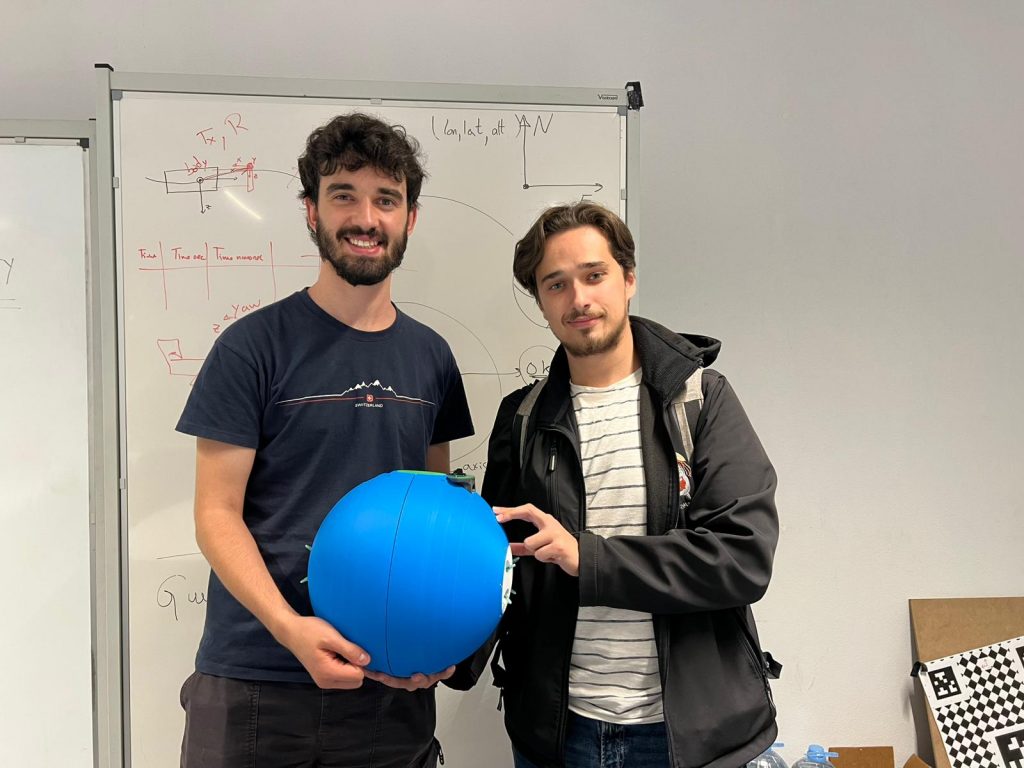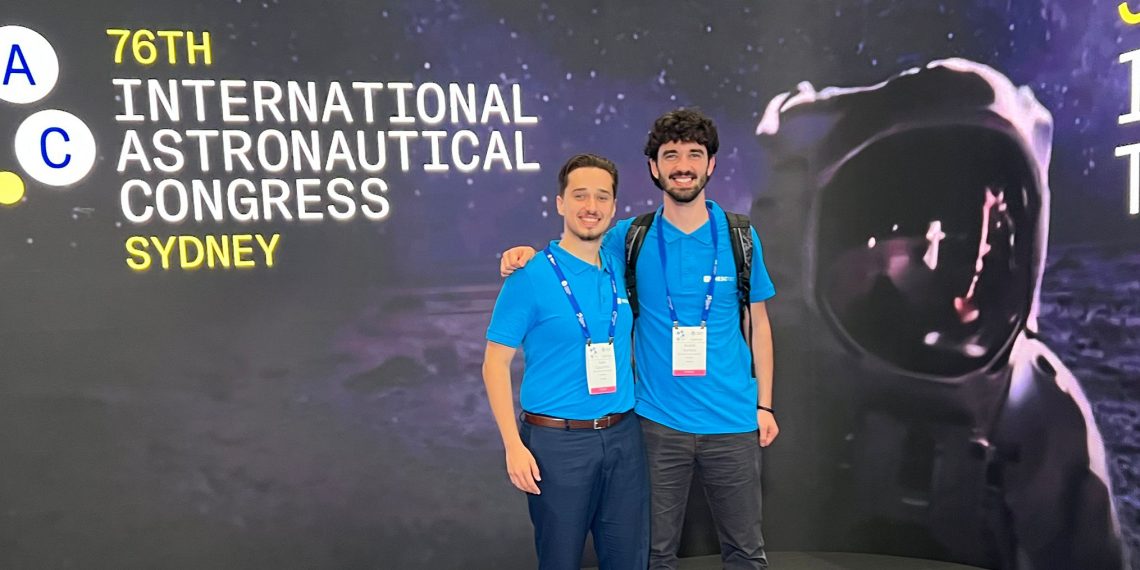For the first time, INESC TEC is represented at the International Astronautical Congress (IAC), the most important global event in the Space sector. Researchers André Santos and João Coutinho travelled to Australia to present a prototype which, in just a few days, will head to Canada to be tested on a parabolic flight.
This prototype – developed under the Sentinel-Orb project – is inspired by INESC TEC’s internationally recognised and award-winning robot, the UX1-Neo. However, instead of exploring the ocean floor, the researchers have now developed a “free-flying robot”: a compact aerial robotic sphere, designed to operate fully autonomously.
The prototype, created within this exploratory project funded by the MIT Portugal programme, was “carefully designed to provide multifunctional support to astronauts during Extravehicular Activities (EVAs) and Intravehicular Activities (IVAs), offering advanced solutions in space contexts, but also to operate in the future as a scout-robot for monitoring purposes,” explained Ana Pires, principal investigator of Sentinel-Orb.
André Dias, also an INESC TEC researcher and co-principal investigator of the project, mentioned that “the system was designed to ensure optimised performance in microgravity environments, enabling safe and effective operations. Among the key features, we can emphasise inspection, mapping, and navigation in areas that are difficult to access or potentially hazardous for direct human intervention.”
During the IAC, held this year in Sydney (Australia), INESC TEC researchers André Santos and João Coutinho had the opportunity to present the project and the unique features of this robotic system, which will soon undergo testing in a microgravity environment.

The parabolic flight where this new INESC TEC prototype will be tested will take place at the National Research Council of Canada, with support by the International Institute for Astronautical Sciences (IIAS) – with which INESC TEC has signed a Memorandum of Understanding.
The researchers mentioned in this news piece are associated with INESC TEC and ISEP



 News, current topics, curiosities and so much more about INESC TEC and its community!
News, current topics, curiosities and so much more about INESC TEC and its community!